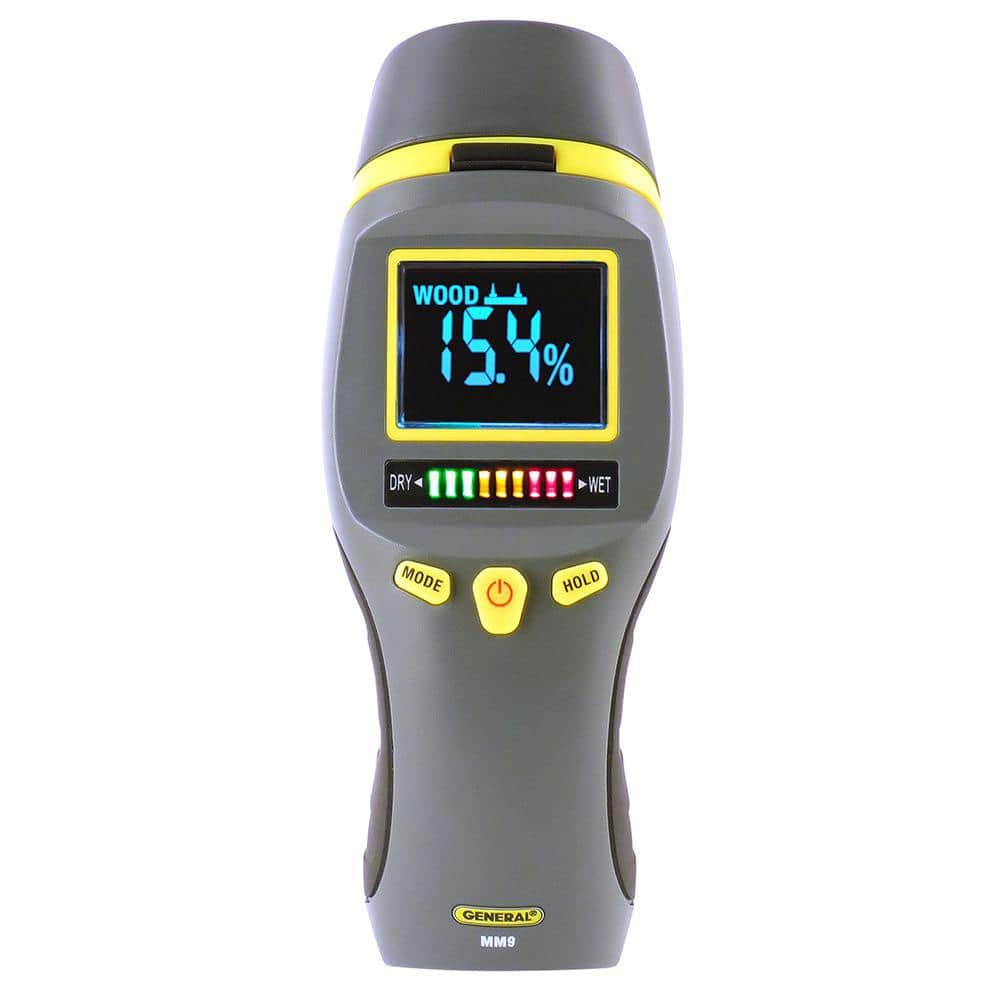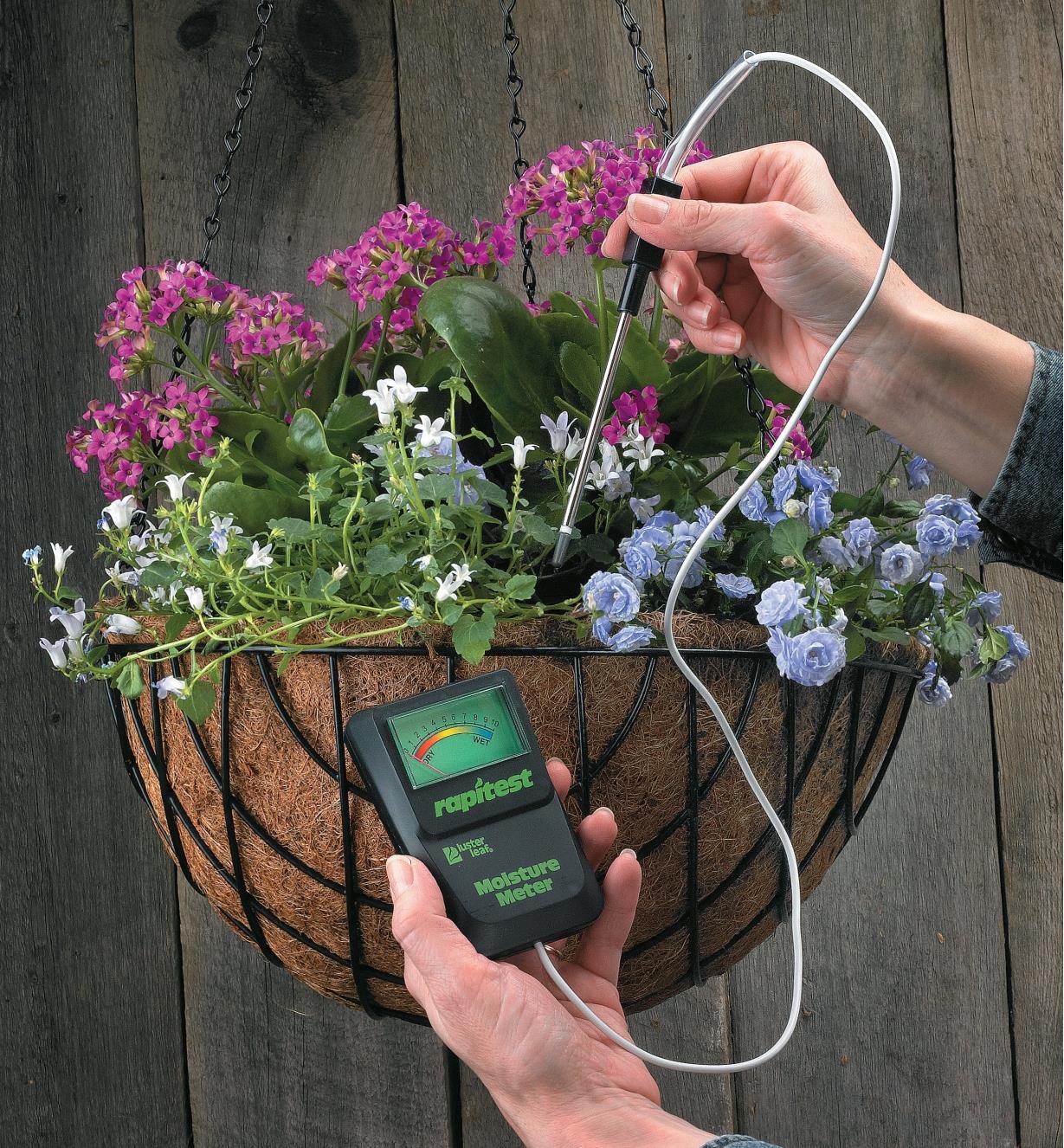Comprehending the Various Types of Moisture Meters and Their Applications
Comprehending the Various Types of Moisture Meters and Their Applications
Blog Article
Comprehending the Relevance of a Moisture Meter in Preventing Mold and Water Damages in your house
In the world of home maintenance, the presence of dampness can typically be a quiet yet formidable opponent, qualified of triggering prevalent mold development and dangerous water damages if left unattended. Comprehending the significance of a wetness meter in this fight is not merely an alternative but a critical need.
Value of Moisture Discovery
Reliable moisture detection approaches are vital for securing buildings and protecting against potential mold growth and water damages. Moisture can permeate right into numerous building materials, resulting in architectural problems and carcinogen. By using a moisture meter, building owners can proactively recognize areas susceptible to excess wetness, permitting prompt treatment and mitigation techniques.
Moisture meters provide exact analyses of wetness levels in various materials such as timber, concrete, and drywall. This data helps in pinpointing locations of problem, also in hard-to-reach or concealed areas. Early discovery of dampness build-up enables punctual repair work or modifications to stop more damages.

Exactly How Moisture Meters Job
Wetness meters play an essential role in the proactive identification of excess dampness, aiding in the avoidance of possible mold development and water damages by supplying precise analyses of dampness levels in different structure products. These tools function based on different principles, depending upon their kind. Moisture Meter. Pin-type wetness meters, for example, have 2 pins that penetrate the material to determine the electric resistance in between them. When moisture exists, it enhances the material's conductivity, causing a lower resistance reading. Pinless moisture meters, on the other hand, usage electro-magnetic sensors to scan the product without causing damage. These sensing units send out electromagnetic signals that pass through the material and measure the dielectric buildings, suggesting dampness web content. Some advanced dampness meters pin both incorporate and pinless technologies for thorough moisture detection. Comprehending just how moisture meters feature is important for timely and exact moisture level assessments, making it possible for reliable precautionary steps versus mold and mildew and water damage.
Detecting Early Indication
Upon initial evaluation of a home, acknowledging subtle indicators of excess moisture becomes essential in the very early detection of prospective mold development and water damages. Some usual very early warning indications consist of mildewy smells, water discolorations on ceilings or wall surfaces, peeling paint or wallpaper, and warped or stained surfaces. Stuffy odors often indicate the presence of mold or mold, even if no noticeable indications appear. Water discolorations can signify leakages or seepage, while peeling off paint or wallpaper may be a result of dampness jeopardizing the bond of these materials to the surface area. Warped or discolored surfaces, such as twisting floorboards or blemished drywall, are clear indications of water damage. Furthermore, a boost in allergic reaction signs or breathing concerns amongst residents might recommend the presence of mold due to excess dampness. this contact form By without delay recognizing and resolving these very early warning signs, home owners can minimize the risk of considerable mold growth and water damages in their residential or commercial properties.
Preventing Mold Growth
Identifying very early indication of excess dampness within a building not just makes it possible for punctual discovery of possible mold growth and water damages however additionally acts as a positive measure in avoiding the expansion of mold. To successfully protect against mold growth, it is important to resolve any sources of moisture quickly. This can consist of dealing with leaks in roofings, home windows, or pipelines, making sure appropriate air flow in moist locations like cooking areas and restrooms, and making use of dehumidifiers in high-humidity spaces. Routinely inspecting and preserving the home's plumbing, roof covering, and gutters can likewise assist in preventing water invasion that can result in mold and mildew development.
In addition to attending to moisture resources, maintaining interior moisture degrees listed below 60% can significantly inhibit mold growth. Appropriate air flow, ample insulation, and using air conditioning unit or followers can aid regulate indoor moisture degrees. Keeping track of moisture degrees in locations vulnerable to wetness, such as basements and creep areas, making use of a wetness meter can likewise help in very early detection of raised moisture degrees and possible mold and mildew growth. By taking proactive measures to stop excess wetness and mold growth, homeowners can safeguard their residential property and indoor air quality.
Advantages of Regular Surveillance
Routine surveillance of wetness degrees in a building can play a vital role in keeping a healthy interior environment and protecting against prospective mold and mildew and water damage. By routinely examining moisture levels, home owners can discover any kind of issues without delay and take necessary activities to stop mold development and water damages. One of the original site crucial advantages of regular tracking is very early detection. By determining and resolving high moisture levels beforehand, property owners can interfere before mold and mildew has the chance to establish and spread out. This aggressive method can save both time and money in the lengthy run by stopping comprehensive mold and mildew removal and helpful hints repair work expenses.
In addition, normal surveillance enables homeowners to track patterns and fads in wetness degrees over time. Eventually, the consistent tracking of moisture degrees empowers house owners to protect their property, secure their health, and protect the integrity of their indoor setting.

Verdict

By utilizing a moisture meter, home proprietors can proactively determine locations susceptible to excess dampness, enabling for prompt intervention and reduction strategies.

Checking dampness degrees in areas susceptible to dampness, such as basements and crawl rooms, making use of a dampness meter can additionally help in early detection of elevated dampness degrees and prospective mold growth. (Moisture Meter)
Report this page